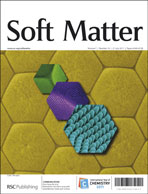Using mixtures of the anionic myristic acid (C13COOH) and the cationic cetyl trimethylammonium chloride (C16TA+Cl−) in aqueous solutions at a 2 : 1 ratio, we show that the outstanding stability of foams generated from sufficiently concentrated “catanionic” surfactant mixtures can be explained by a synergy effect between two fundamentally different mechanisms. Applying a multi-scale approach, in which we link static and dynamic properties of the bulk solutions, isolated gas/liquid interfaces, thin liquid films and foams, we identify these two mechanisms to be as follows: firstly, cationic mixtures create tightly packed surfactant layers at gas/liquid interfaces, which are strongly viscoelastic and also confer high disjoining pressures when two interfaces are approaching each other to form a thin liquid film. Foams created with such kind of interfaces tend to be extremely stable against coalescence (film rupture) and coarsening (gas exchange). However, typical time scales to cover the interfaces are much longer than typical foaming times. This is why a second mechanism plays a key role, which is due to the presence of micron-sized catanionic vesicles in the foaming solution. The bilayers of these vesicles are in a gel-like state, therefore leading to nearly indestructible objects which act like elastic micro-spheres. At sufficiently high concentrations, these vesicles jam in the presence of the confinement between bubbles, slowing down the drainage of liquid during the initial foaming process and therefore providing time for the interfaces to be covered. Furthermore, the tightly packed vesicles strongly reduce bubble coalescence and gas transfer between bubbles.

You have access to this article
 Please wait while we load your content...
Something went wrong. Try again?
Please wait while we load your content...
Something went wrong. Try again?


 Please wait while we load your content...
Please wait while we load your content...